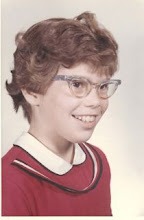Beautiful Flaws
“Sometimes it's just
not easy to like Lizzie Hawkins. Sometimes you can't help but admire her
determination.”
The above quote is the entirety of Karen Arendt’s four-star
review of Every Day After on Goodreads. It is one of my favorites. Quite to the
point, don’t you think? Aside from that, I love it because it’s true.
This is my Nana, Nelda Posey Perry, at about ten or eleven
years old.
This is my Jake, Curtis Aldridge Perry, at about nineteen
years old.
Jake served as inspiration for the character of Ben Butler,
Lizzie’s best friend. Jake, too, was flawed. Unlike Nana, he was often too quiet.
He rarely spoke what was on his mind. He was trusting to a fault, and he was a
bit of a procrastinator.
But despite their shortcomings, all who knew Nana and Jake
sincerely loved them. They were genuine. They were caring. They were smart. They
were strong—both in body and in spirit. They are gone now, and they are deeply
missed—flaws and all. A day doesn’t pass without me wishing I could hear Nana
speak her mind or witness Jake keeping the peace just once more.
When I decided to write Every Day After, I wanted to develop
characters that not only reflected my grandparents’ strengths, but also their
weaknesses. I wanted to tell a story of kids overcoming unimaginable hardships
during the Great Depression—just as Nana and Jake had done. I wanted to tell a
story of kids overcoming those hardships in spite of their flaws, and in the
end, overcoming their flaws in spite of their hardships. The final result is a
main character that can grate on your nerves, but I didn’t want to make Lizzie
perfect and likable from the outset. I wanted her to struggle to overcome her
shortcomings and experience emotional growth just as we all (hopefully) do.
Real-life stories are those of day-to-day struggles to
overcome weaknesses—weaknesses that we display even as adults. How could I
expect eleven- or twelve-year-olds, real or fictional, to consistently choose
the high road and make it through tough trials mistake-free? I couldn’t. That
simply isn’t reality. So, yes, most of the characters in Every Day After mess
up, say the wrong thing, or act out of line. But so did my grandparents. And so
do I. Far more often than I would care to admit.
Nobody is perfect. The beauty in our imperfections is our
calling to recognize them and change. If we only loved flawless folks, we’d
never love anybody—not even ourselves.
Without flaws there could be no growth or change. There
could be no redemption or unconditional love. Imperfections add depth and
meaning to our everyday lives. They do the same in fictional lives as well.
Give flawed characters a chance. Forgive them their flaws just as you must
forgive others on a daily basis. There is immeasurable beauty in flaws and the transformation
they ignite.
Laura, thank you for creating characters who mess up and still pick themselves back up again. That allows us to love them all the more! I can't wait to read your next novel -- so hurry up and finish it.
Readers: You can learn more about Laura at her blog, or follow her on Twitter: @laurapgolden






I had a Nana like that... And I loved Every Day After for its characters. Go Laura!
ReplyDeleteI loved Every Day After and its masterfully-fleshed-out characters. Can't wait to see what you'll write next, Laura!
ReplyDelete